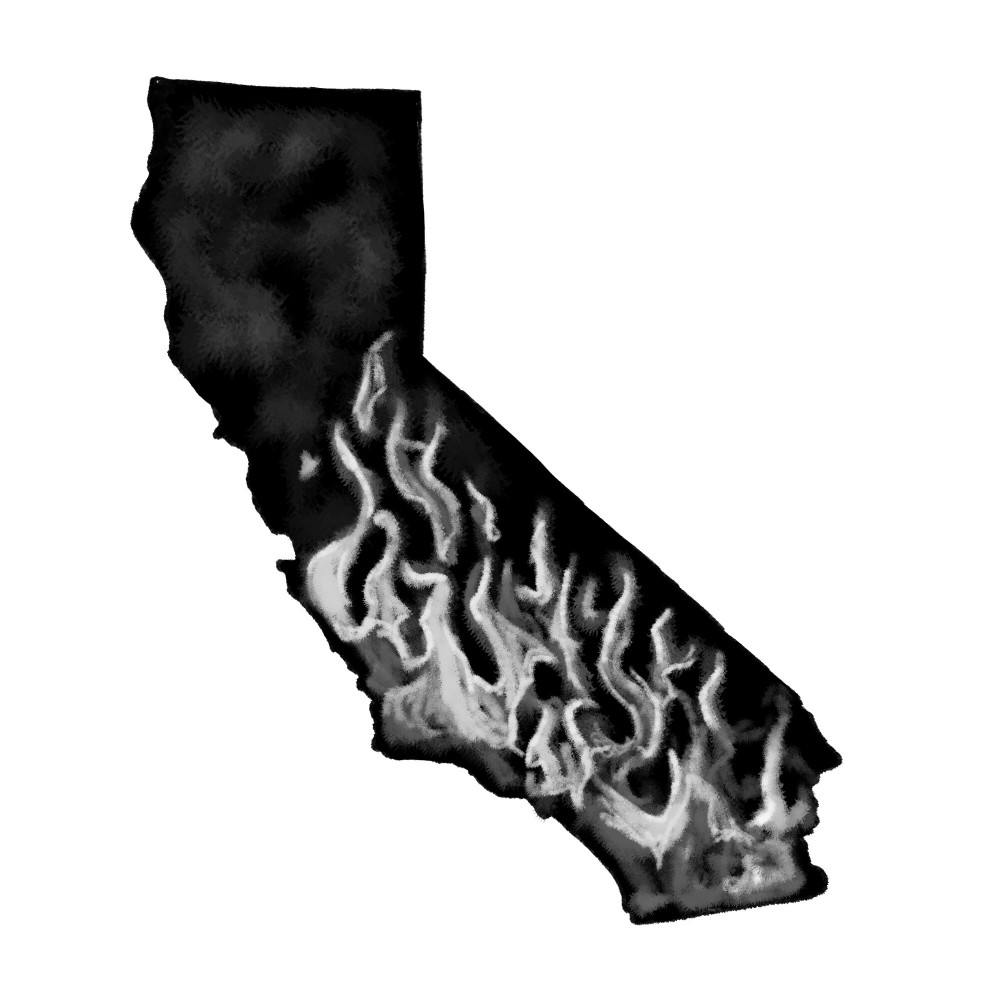In the same week that wildfire-prevention blackouts were imposed on hundreds of thousands of Northern Californians, a study on the past 1400 years of wildfire activity in California’s Sierra Nevada region revealed that climate change will bring more burning in California’s future.
The study, which was conducted by Richard Vachula GS and co-authors professors James Russell and Yongsong Huang from the Department of Earth, Environmental and Planetary Sciences, also indicated that the earth’s climate has driven burning activity far more than any other factor, including human activity.
“Humans are building an ecosystem that is meant to burn,” Vachula said. The Pacific Gas and Electric shutoffs this months are an attempt to protect that ecosystem from the inevitable fires, but no human effort, including this one, will be able to truly counteract the power of climate in the long term.“If we are causing long-term warmer and dryer climates, there are going to be more fires,” Huang said.
This research comes alongside an abundance of recent work at the University on climate change. And The Herald’s fall 2019 poll found that 37.8 percent of undergraduate students believe the most important issue facing the country today is the environment and climate change.
“When we focus locally, people really strongly influence fire regimes, both now and in the past. If you back out from that and look more broadly, Northern California scale, climate really dominates how frequent and how intense fires are,” Russell said.
“Human management is able to mitigate fire at the local level, but the broader regional fire history is driven by climate,” Vachula added.
To look into the impact of human fire management systems, the team studied how Native American populations in Yosemite would set low-level fires to clear forests in an effort to control wildlife and food resources. These local burns occurred independent of climate.
Other human interventions have included fire suppression efforts by the park’s service — despite the fact that this is not necessarily ideal for the park’s ecology, Russell said. Today, controlled burns are practiced in Yosemite valley, as “it’s now recognized that fires sometimes need to happen in national park systems” since suppression acts have led to a build-up of fuel.
But fire can only be controlled locally. In the future, as much as people may hope that human intervention could manage fires, climate is really the overriding impactor. “Warm and dry climates promoted burning, and projections for the future are warm and dry climates, so it’s only going to become more flammable in the future,” Vachula said. Fire management will only become more costly in the future, and climate change should cause an increase in fire intensity and frequency in the coming years.
In order to gather these findings, Vachula accumulated fire activity data from the past 1400 years by studying charcoal embedded in layers of sediment in Swamp Lake in California. “The only thing that’s unique about the last 50 years or so is how little burning there has been in the context of the 1400 year record that we reconstructed,” Vachula said.
The record was constructed using charcoal as a proxy for measuring fire activity in California. During most fires, residual carbon is left behind in the form of charcoal. This charcoal then shoots up into the air in convective plumes and gets dispersed. The scattered charcoal may wash into lakes and form layers.
Swamp Lake in Yosemite National Park is unique because it produces distinct layers of charcoal and other materials that settle on the lake floor year after year. “You can then take the sediment apart and count the amount of charcoal in each layer to get a a history of how strong were fires through time, how many were there and how intensely the landscape was burning through the years,” Russell said.
In addition, because the lake is in a national park, rangers have been recording fire history very meticulously for over 100 years. “When you actually go back in time further before humans have any records, now you have confidence that what you see is believable … because you have 100 years of records to prove that the proxy (of different charcoal particle size) works,” Huang said. The team was able to compare their charcoal-based estimates with the national park data from the past 100 years, corroborating their estimates. By confirming the accuracy of the last 100 years of charcoal-based estimates against the park records, the researchers were able to feel confident in their estimates going back more than a thousand years before that.
The national park records documented area, intensities and temperatures of each burn, among many other details. This made it possible for the team to correlate the size of the charcoal particles in the lake sediment from a certain time period with the geographic radius of the fire as it had been recorded by the park’s rangers, Vachula said.
Huang is inspired by Winston Churchill to conduct research that spans a wide range of time. Churchill said: “The farther back you can look, the farther forward you are likely to see.”
“That is a good summary of what we do: We are trying to look in the past to find clues for the future, before it affects your life at a time that’s too late to take action,” he added.





